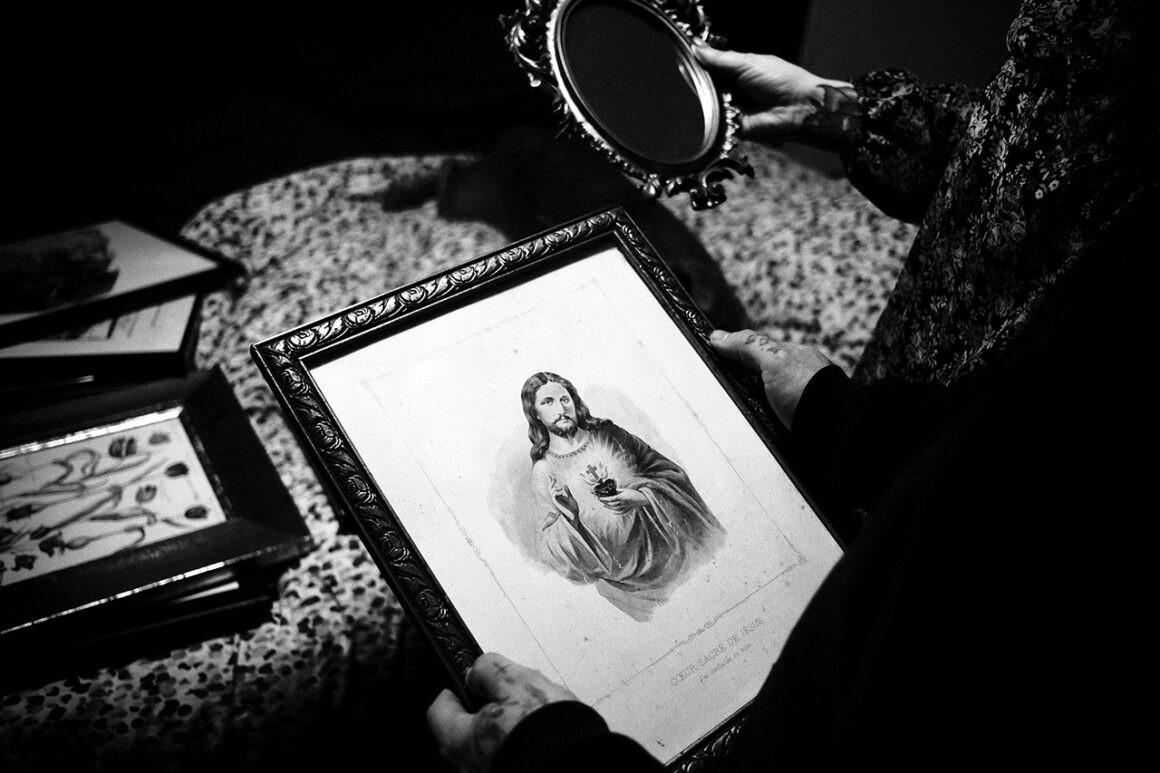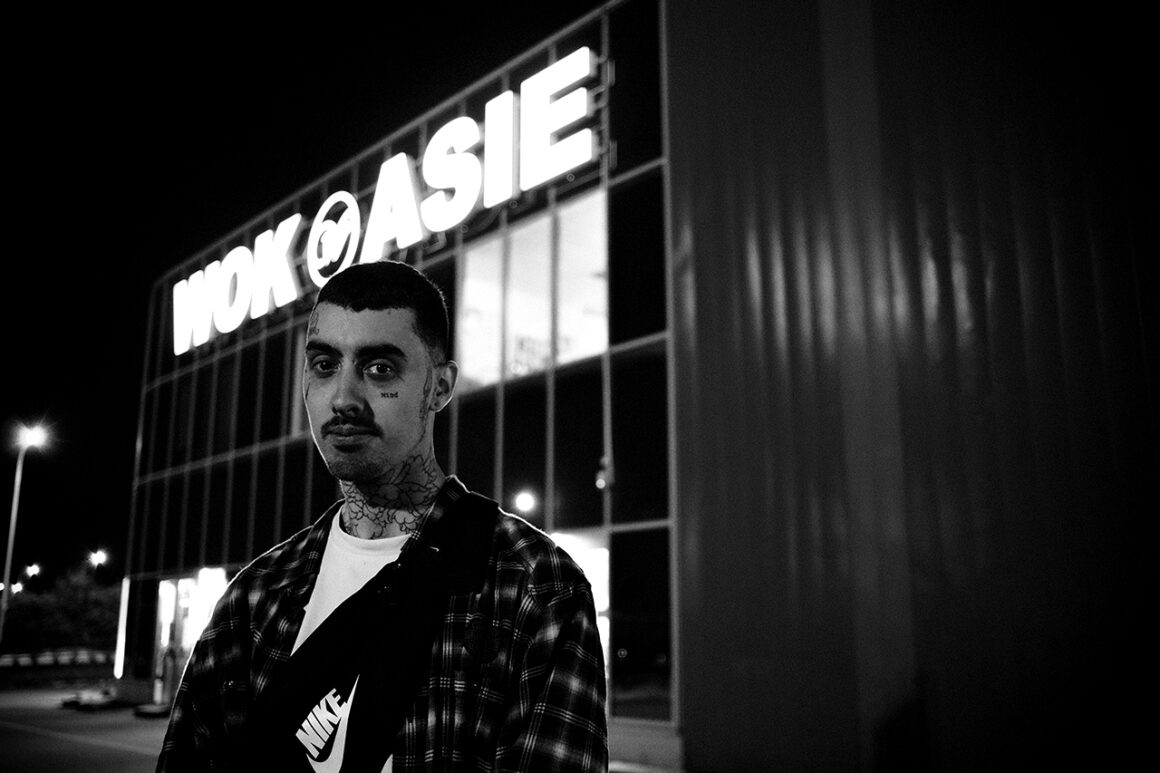Brice Gelot, artistically known as NSD 51/50, is a photographer who plunges into the raw energy of the streets, capturing compelling black and white images. His moniker, NSD 51/50, is more than just a catchy phrase; it’s a statement loaded with meaning, intrigue, and a hint of rebellion. For those in the tattoo community and beyond, the “5150” element of his name sparks curiosity. What is the 5150 Tattoo Meaning, and how does it connect with Gelot’s artistic vision and the broader world of tattoos?
 Brice Gelot NSD 51/50 portrait, embodying the spirit of street photography and tattoo culture
Brice Gelot NSD 51/50 portrait, embodying the spirit of street photography and tattoo culture
Unpacking the 5150 Code: More Than Just Numbers
When Brice Gelot adopted the name NSD 51/50, he layered two powerful concepts. “NSD” stands for “Never Say Die,” a motto drawn from the iconic movie The Goonies. This embodies a spirit of perseverance and relentless determination. The “51/50” part adds another layer of complexity.
As Gelot explains, 5150 refers to the California Welfare and Institutions Code, specifically section 5150. This code allows law enforcement or mental health professionals to involuntarily confine an individual deemed a danger to themselves or others due to a mental health crisis. In essence, being labeled “5150” can be interpreted as being considered “crazy” by the authorities.
Gelot embraced the 51/50 label because it reflected how others perceived his daring approach to street photography. Venturing into unconventional locations and capturing raw, unfiltered moments often led people to question his sanity. Thus, “51/50” became a badge of honor, a testament to his fearless pursuit of authentic imagery.
The 5150 Tattoo Meaning: Rebellion and Resilience
So, how does this translate to 5150 tattoo meaning? While not a widely established tattoo symbol, the 5150 carries potent connotations that resonate within certain subcultures, particularly those that value non-conformity and resilience.
For someone choosing a 5150 tattoo, the meaning can be deeply personal and multifaceted:
-
Embracing the “Crazy” Label: A 5150 tattoo can be a way to reclaim the term “crazy,” owning it not as a derogatory label but as a symbol of individuality and thinking outside the box. It can represent a rejection of societal norms and an embrace of one’s unique perspective, even if it’s considered unconventional.
-
Mental Health Awareness and Survival: Given the code’s origin, a 5150 tattoo can also be a powerful, albeit potentially controversial, statement about mental health. It might symbolize personal struggles with mental health, survival through crisis, and a defiance against being defined solely by these struggles. In this context, it can be a mark of resilience and a reminder of overcoming adversity.
 Project "For The Love of God" showcasing Brice Gelot's exploration of diverse themes within street photography
Project "For The Love of God" showcasing Brice Gelot's exploration of diverse themes within street photography
-
Never Surrender Attitude: Combining “5150” with “Never Say Die” enhances the tattoo’s meaning. It becomes a bold declaration of unwavering spirit, refusing to give in to challenges, whether they are external obstacles or internal battles. This resonates with the “Never Say Die” philosophy Gelot adopted from The Goonies, signifying a commitment to pushing boundaries and defying expectations.
-
Connection to Street Culture: For those immersed in street culture, including skateboarding, punk music, graffiti, and tattoo art itself, a 5150 tattoo can symbolize belonging and shared values. It aligns with the raw, unfiltered, and often rebellious nature of these subcultures.
 Black Contrast Tattoo Shop, captured by Brice Gelot, highlighting the intersection of tattoo culture and street photography
Black Contrast Tattoo Shop, captured by Brice Gelot, highlighting the intersection of tattoo culture and street photography
Tattooing as a Form of Street Expression
Brice Gelot sees tattoos as intrinsically linked to street culture, much like graffiti. He recognizes tattooing as a powerful form of self-expression with a rich history across cultures. For Gelot, photographing tattooed individuals and tattoo artists is a natural extension of his broader project of documenting the diverse facets of street life. His project “REAL RECOGNIZE REAL” specifically focuses on portraits of tattooed people, celebrating tattoo artists and enthusiasts as vital contributors to this culture.
 Tattoo artist David Carthy portrayed by Brice Gelot, part of the "REAL RECOGNIZE REAL" project
Tattoo artist David Carthy portrayed by Brice Gelot, part of the "REAL RECOGNIZE REAL" project
Choosing a 5150 tattoo is a bold move. It’s not a mainstream symbol, and its meaning is nuanced and layered. However, for those who connect with its message of resilience, rebellion, and the “Never Say Die” spirit, it can be a deeply meaningful and impactful piece of body art. Like Gelot’s photography, a 5150 tattoo can be a powerful statement that challenges perceptions and celebrates individuality in its rawest form.
[

